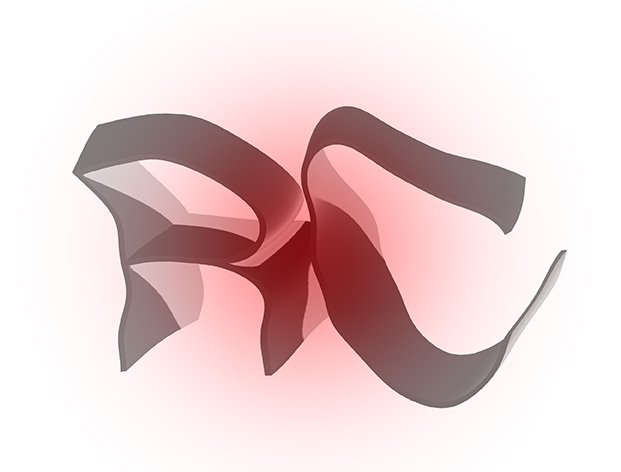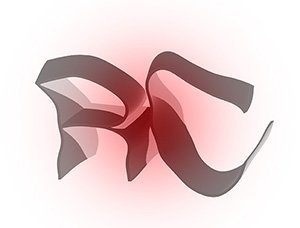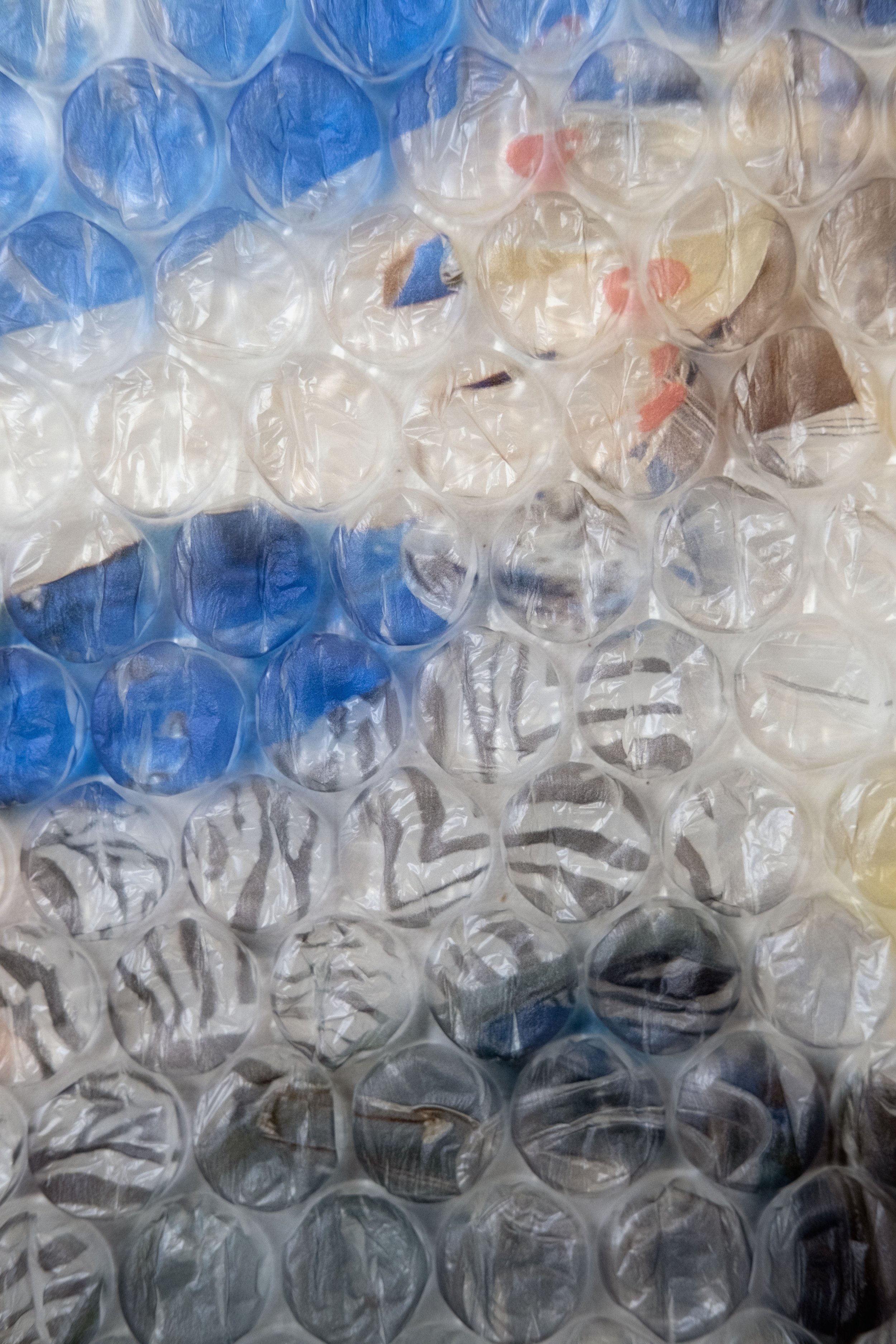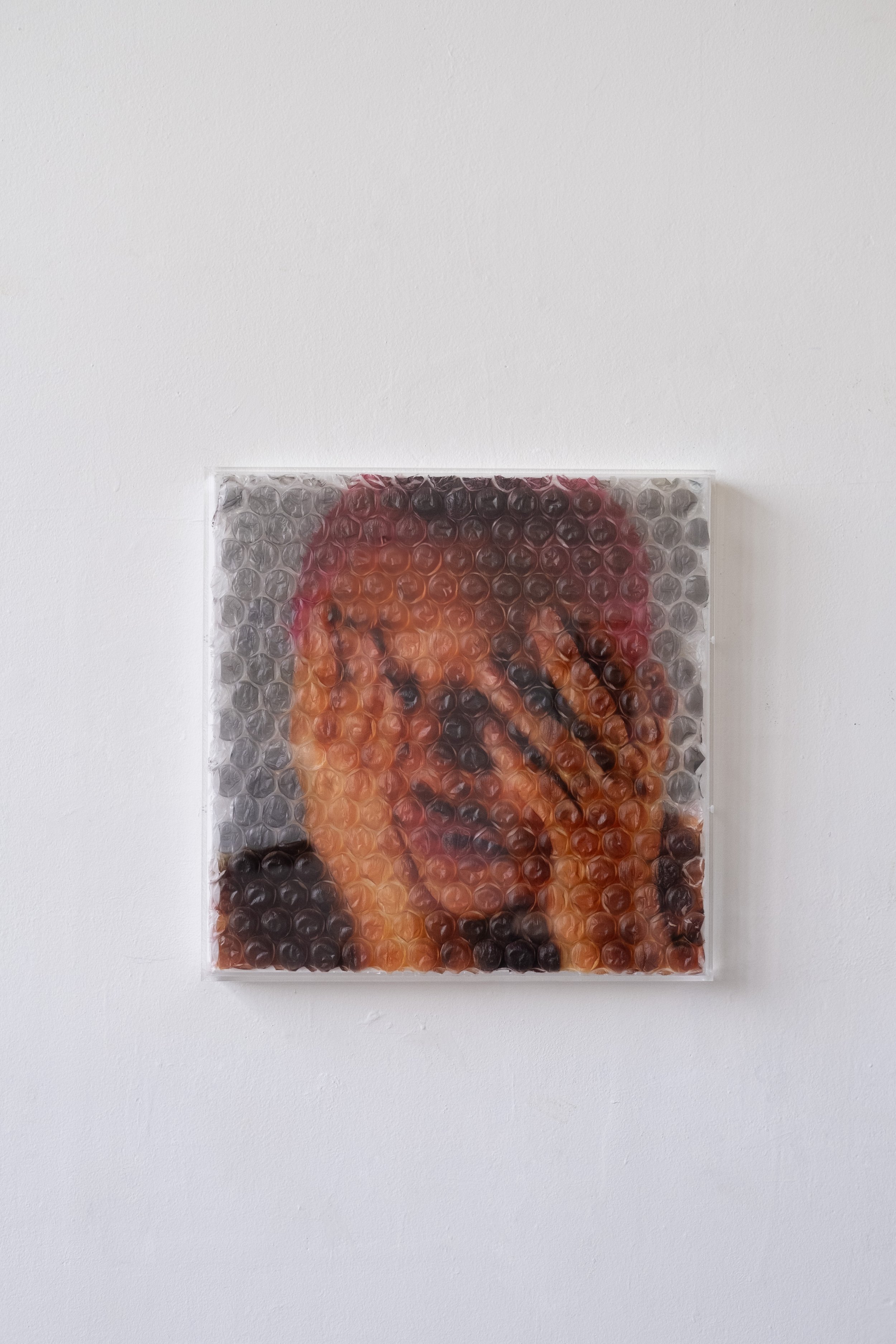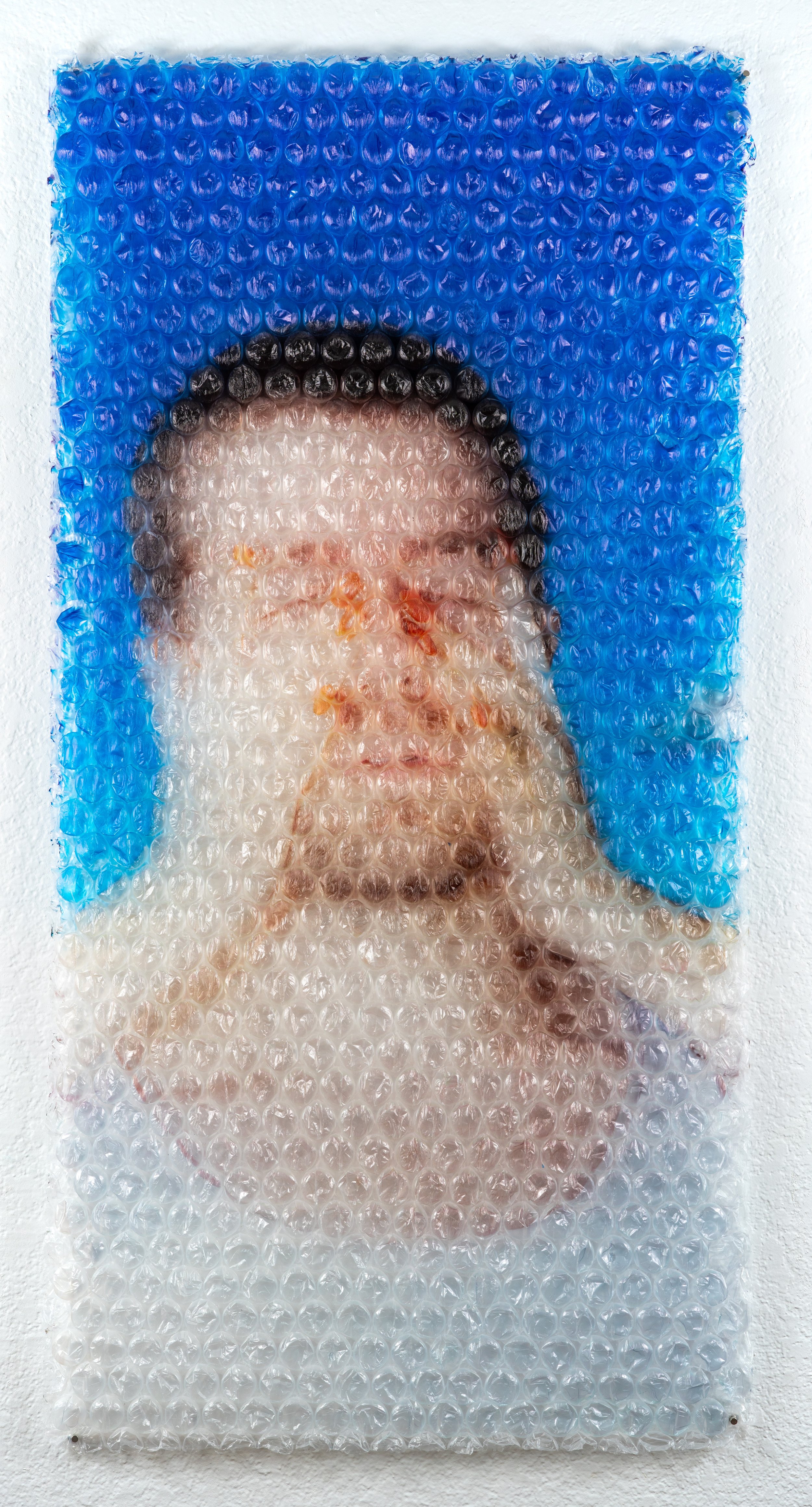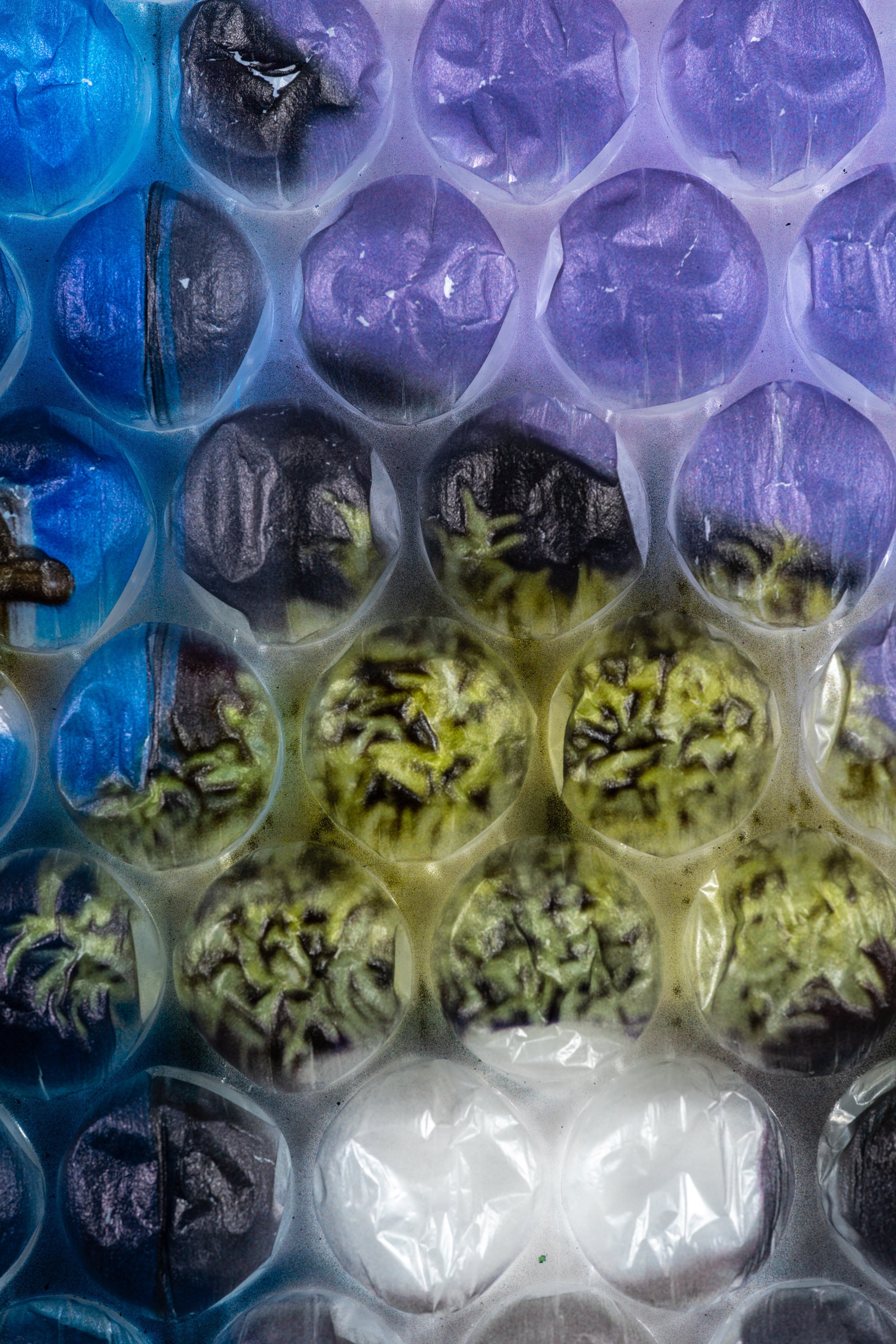The works in Pure Semblance are made using a UV printer: a unique type of digital printer that uses ultraviolet light to cure the ink as soon as it is applied to a surface.
While in grad school, I was lucky to have access to a small Roland UV printer in the university’s fabrication lab. I immediately started experimenting with it and printed my photographs on every kind of surface I could find. Many of these experiments didn’t work—the photos would be completely illegible or, sometimes, too legible. One afternoon, I found a sheet of bubble wrap discarded on the sidewalk and decided to try printing on it. I was so excited by the effect—the bubbles reminded me of squishy, tactile pixels. I was drawn to the way details would be rendered on top of the bubbles versus the spaces between them.
Often discarded after a single use, bubble wrap mirrors the fleeting nature of digital pictures that are easily shared and forgotten in our fast-paced, media-saturated world. The bubbles act as individual pixels, connecting the physicality of the material to its digital counterpart, and emphasizing the delicate, temporary nature of both. The works in Pure Semblance demand the viewer spend more time with them—some are only legible from the right angle or distance, and up close are almost completely abstracted.
The works are enclosed in a gallery-quality plexiglass lid with a canvas backing, which will protect them for many years to come. However, some fading and deflation is intrinsic to the work. Pure Semblance invites the viewer to reconsider the way they interact with images, and emphasizes the importance of texture and materiality in an era dominated by the intangible digital realm.
